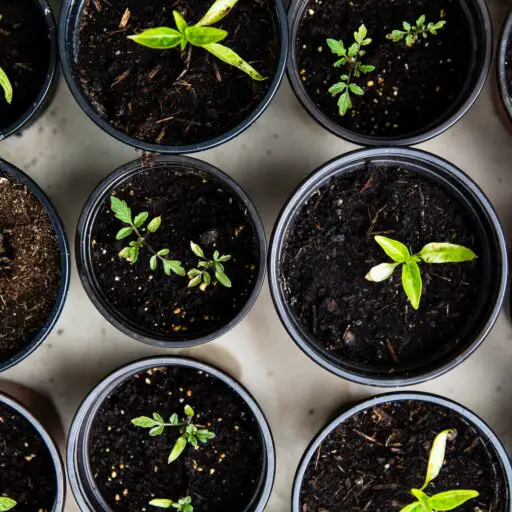Support our educational content for free when you purchase through links on our site. Learn more
Have you ever wandered through a neighborhood and stumbled upon a vibrant patch of green bursting with tomatoes, peppers, and herbs? That’s the magic of a community vegetable garden! These shared spaces not only provide fresh produce but also cultivate friendships and foster a sense of belonging among neighbors. Imagine the joy of harvesting a juicy cucumber you planted with your fellow gardeners, or sharing recipes with someone who grew the same heirloom tomatoes.
But community vegetable gardens are much more than just a place to grow food. Did you know that they can significantly reduce food deserts in urban areas, contributing to healthier communities? In this article, we’ll dive deep into the world of community vegetable gardens, exploring their history, benefits, and how you can get involved. Plus, we’ll share some creative ideas for maximizing your garden space and overcoming common challenges. So, grab your gardening gloves, and let’s dig in! 🌼
Key Takeaways
- Community vegetable gardens are shared spaces where individuals grow their own fruits and vegetables, fostering community bonds and sustainable practices.
- These gardens provide fresh produce, which can improve health and well-being, especially in urban areas with limited access to grocery stores.
- Starting a community garden involves planning, gathering support, and securing funding, but the rewards are well worth the effort.
- Creative gardening techniques like vertical gardening and companion planting can help maximize limited space.
- Engaging the community through events and activities can enhance social connections and promote a sense of belonging.
Ready to get your hands dirty? 👉 Shop gardening tools like gloves, trowels, and watering cans on Amazon | Walmart | Home Depot to kickstart your community gardening journey! 🌿
Table of Contents
- Quick Tips and Facts about Community Vegetable Gardens
- The Roots of Community Vegetable Gardens: A Historical Perspective
- Benefits of Joining a Community Vegetable Garden
- How to Start Your Own Community Vegetable Garden
- Essential Tools and Supplies for Community Gardening
- Creative Ideas for Maximizing Your Community Garden Space
- Examples of Successful Community Vegetable Gardens
- Common Challenges in Community Vegetable Gardens and How to Overcome Them
- Community Vegetable Garden Etiquette: Best Practices
- Sustainable Practices in Community Vegetable Gardening
- Engaging the Community: Events and Activities
- Conclusion
- Recommended Links
- FAQ
- Reference Links
Quick Tips and Facts about Community Vegetable Gardens
Community vegetable gardens are a great way to grow your own food, connect with your community, and contribute to a sustainable food system. Here are some quick tips and facts to get you started:
- What is a community vegetable garden? A community vegetable garden is a shared space where individuals or families can grow their own fruits, vegetables, and herbs.
- Benefits of community vegetable gardens:
- Fresh produce and plants
- Sense of community and connection to the environment
- Satisfying labor and neighborhood improvement
- Types of community gardens:
- Neighborhood gardens
- Residential gardens
- Institutional gardens
- Demonstration gardens
- Plot size: Varies, but typically ranges from 200 to 1,000 square feet
- Location: Critical factors include accessibility, travel time, and soil conditions
- Plant choice and physical layout: Considerations include measurements, sunlight locations, plant location, and grouping plants with similar life cycles
The Roots of Community Vegetable Gardens: A Historical Perspective
Community vegetable gardens have a rich history that dates back to the 19th century. Here are some key events and milestones in the history of community vegetable gardens:
- 19th century: Community gardens emerged in Europe and North America as a response to urbanization and industrialization.
- World War I: Community gardens became known as “war gardens” and were used to produce food for soldiers and civilians.
- World War II: Community gardens were again used to produce food, and were known as “victory gardens.”
- 1960s and 1970s: Community gardens experienced a resurgence in popularity, particularly in urban areas.
- 1980s and 1990s: Community gardens became more formalized, with the establishment of organizations and networks to support gardeners.
Benefits of Joining a Community Vegetable Garden
Joining a community vegetable garden can be a rewarding experience that offers numerous benefits. Some of these benefits include:
- Fresh produce: Community gardens provide access to fresh, healthy produce, which can improve overall health and well-being.
- Community building: Community gardens bring people together, fostering a sense of community and social connection.
- Environmental benefits: Community gardens can help reduce carbon emissions, conserve water, and promote biodiversity.
How to Start Your Own Community Vegetable Garden
Starting a community vegetable garden requires some planning and effort, but can be a rewarding experience for all involved. Here are some steps to follow:
- Find a location: Look for a spot with good sunlight, water access, and soil quality.
- Gather support: Recruit interested community members and gather support from local organizations and government agencies.
- Develop a plan: Create a plan for the garden, including plot sizes, plant selection, and maintenance responsibilities.
- Secure funding: Apply for grants, seek donations, and consider membership fees to support the garden.
- Build the garden: Construct raised beds, install irrigation systems, and prepare the soil for planting.
Essential Tools and Supplies for Community Gardening
Community gardening requires some essential tools and supplies to get started. Some of these include:
- Gloves: Gardening gloves protect your hands from thorns, prickles, and other hazards.
- Trowels: Trowels are used for planting, transplanting, and mixing soil.
- Rakes: Rakes are used for leveling soil, removing debris, and ensuring even distribution of mulch or compost.
- Watering cans: Watering cans are used for watering plants, especially in areas with limited water access.
Creative Ideas for Maximizing Your Community Garden Space
Community gardens often have limited space, but there are many creative ways to maximize your space and make the most of your garden. Some ideas include:
- Vertical gardening: Use trellises, arbors, and other supports to grow vining plants and make the most of your space.
- Container gardening: Use containers to grow plants in small spaces, such as balconies or patios.
- Companion planting: Plant multiple plants together to maximize space and reduce pests and diseases.
Examples of Successful Community Vegetable Gardens
There are many examples of successful community vegetable gardens around the world. Some examples include:
- The High Line: A community garden in New York City that transformed an abandoned elevated rail line into a thriving green space.
- The Chicago Community Garden: A community garden in Chicago that provides fresh produce to low-income families and individuals.
- The Vancouver Community Garden: A community garden in Vancouver that offers plots to individuals and families, as well as educational programs and workshops.
Common Challenges in Community Vegetable Gardens and How to Overcome Them
Community vegetable gardens can present some challenges, but there are many ways to overcome them. Some common challenges include:
- Limited space: Community gardens often have limited space, which can make it difficult to accommodate all interested gardeners.
- Water access: Community gardens may not have access to reliable water sources, which can make it difficult to maintain plants.
- Pests and diseases: Community gardens can be vulnerable to pests and diseases, which can damage plants and reduce yields.
Community Vegetable Garden Etiquette: Best Practices
Community vegetable gardens require some etiquette and best practices to ensure a positive experience for all gardeners. Some of these include:
- Respect for others: Respect other gardeners’ space, plants, and property.
- Communication: Communicate with other gardeners about your plans, needs, and concerns.
- Maintenance: Maintain your plot and contribute to the overall maintenance of the garden.
Sustainable Practices in Community Vegetable Gardening
Community vegetable gardens can be a sustainable way to produce food, but they require some sustainable practices to minimize their impact on the environment. Some of these practices include:
- Composting: Composting reduces waste and creates nutrient-rich soil.
- Rainwater harvesting: Rainwater harvesting reduces the need for municipal water and minimizes stormwater runoff.
- Integrated pest management: Integrated pest management reduces the use of chemical pesticides and maintains ecosystem balance.
Engaging the Community: Events and Activities
Community vegetable gardens can be a great way to engage the community and promote social connections. Some events and activities include:
- Workdays: Organize workdays to maintain the garden and promote teamwork.
- Educational programs: Offer educational programs and workshops on gardening, nutrition, and sustainability.
- Social events: Host social events, such as potlucks and garden tours, to promote community building.
Conclusion

In conclusion, community vegetable gardens are a fantastic way to cultivate not just fresh produce but also a sense of community and connection with the environment. They provide an excellent opportunity for individuals to engage in sustainable practices, learn about gardening, and enjoy the fruits of their labor. While challenges like limited space, water access, and pest management can arise, the benefits far outweigh the negatives.
Positives include:
- Access to fresh, healthy produce 🌽🥕
- Enhanced community bonds and social interaction 🤝
- Environmental benefits such as biodiversity and reduced carbon footprint 🌍
Negatives include:
- Potential conflicts among gardeners over space and resources 😬
- Dependence on community support for maintenance and funding 💰
Ultimately, we confidently recommend getting involved in a community vegetable garden, whether as a gardener or a supporter. It’s a rewarding experience that enriches both your life and the lives of those around you. So, why not gather your neighbors and start planting? 🌱
Recommended Links
-
👉 Shop Gardening Tools on:
-
Books on Community Gardening:
FAQ

What defines a community garden?
A community garden is a piece of land gardened or cultivated collectively by a group of people. These gardens can be divided into individual plots where each gardener is responsible for their own plants, or they may be collective gardens where the harvest is shared among all participants. Community gardens often aim to provide fresh produce to neighborhoods, particularly in urban areas with limited access to grocery stores.
Read more about “Community Garden Goals and Objectives … 🌱”
What is the difference between a farm and a community garden?
While both community gardens and farms involve growing plants, they differ significantly in scale, purpose, and management. Farms are typically larger, commercial operations focused on producing food for sale, while community gardens are smaller, often non-profit initiatives aimed at providing fresh produce for local consumption and fostering community relationships. Additionally, community gardens are usually managed by volunteers or local organizations, whereas farms are run by professional farmers.
How do you build a community vegetable garden?
Building a community vegetable garden involves several key steps:
- Identify a Suitable Location: Look for land that has good sunlight, soil quality, and water access.
- Gather Community Support: Engage local residents and organizations to build a support network.
- Create a Plan: Develop a detailed plan that outlines plot sizes, types of plants, and maintenance responsibilities.
- Secure Funding: Look for grants, sponsorships, or membership fees to support the garden.
- Prepare the Site: Clear the land, build raised beds if necessary, and prepare the soil for planting.
- Plant and Maintain: Organize planting days and ongoing maintenance schedules to keep the garden thriving.
Read more about “How Do Community Gardens Reduce Waste? 10 Surprising Benefits You Need to Know … 🌱”
What are the disadvantages of a community garden?
While community gardens offer numerous benefits, they also come with certain disadvantages:
- Limited Resources: Community gardens often rely on volunteers and donations, which can lead to inconsistent maintenance and resource availability.
- Conflict Among Gardeners: Differences in gardening styles, expectations, and responsibilities can lead to disputes among members.
- Pests and Diseases: Community gardens may face challenges with pests and diseases, which can spread quickly due to proximity.
- Zoning and Legal Issues: Depending on local regulations, establishing a community garden may require navigating complex zoning laws.
Read more about “What are the disadvantages of a community garden?”
How can I get involved in a community garden?
Getting involved in a community garden is easy! Start by researching local community gardens in your area. Many gardens welcome new members, and you can often find information on their websites or social media pages. Attend community meetings or events to meet other gardeners and learn about available plots. If you’re interested in starting a garden, gather a group of interested neighbors and reach out to local organizations for support and guidance.
Read more about “Unveiling the 10 Powerful Purposes of Community Gardens You Never Knew About! … 🌻”


